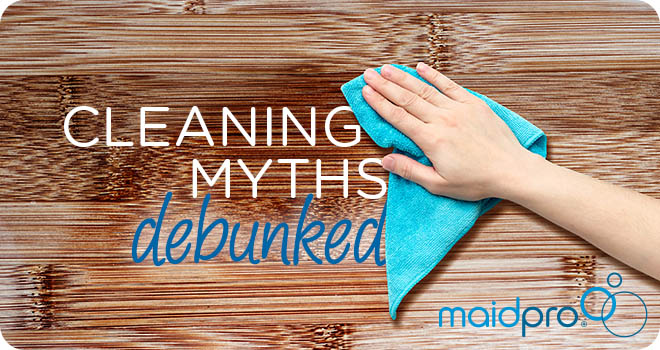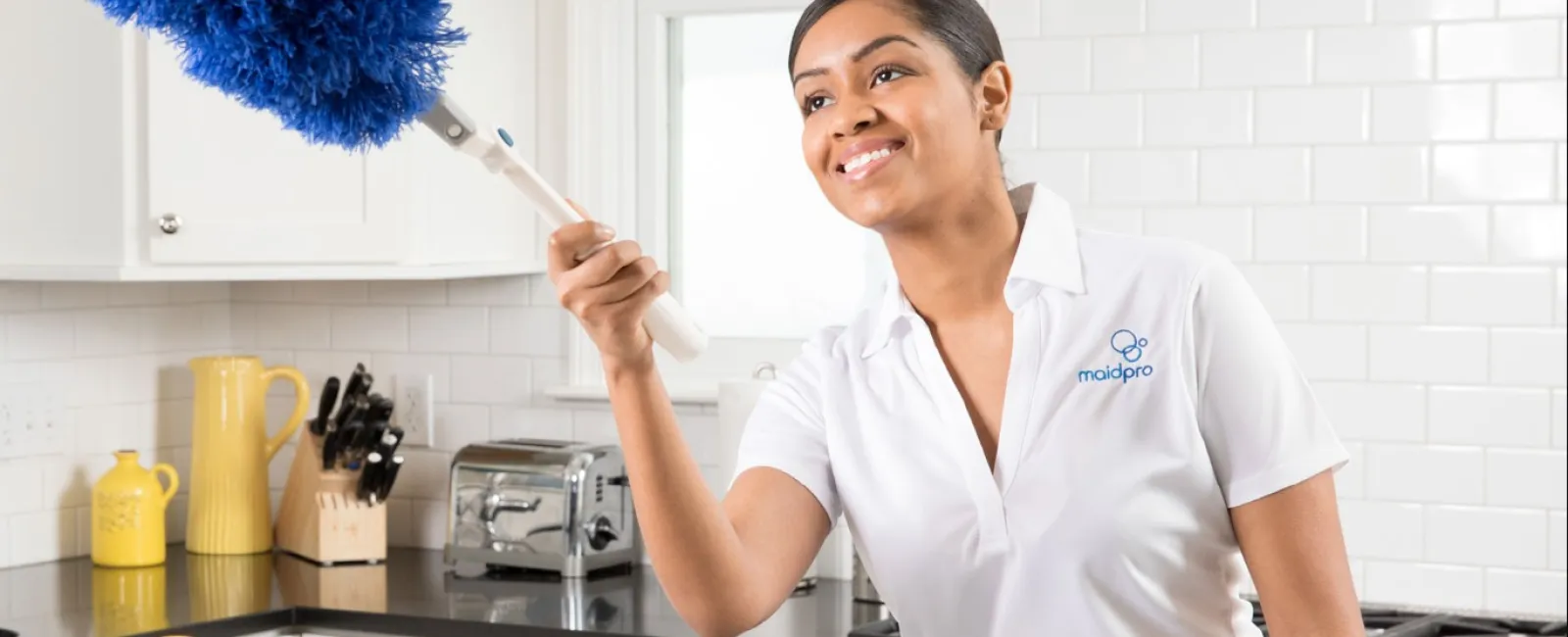
Who doesn’t love the brilliant gleam of a freshly polished dining room table? That lemony smell has become so synonymous with clean that few dare question what’s lurking beneath the shiny façade. Thanks to generations of advertising wizardry, most people have been fooled into believing the surfaces in their home are cleaner than they are. Some cleaning practices could be making your home more susceptible to spreading germs, so here’s the truth about how to dust and polish properly.
Myth #1 If a surface is shiny, it’s clean.
Truth Shininess means only that a surface is smooth, as shine happens when light bounces off an even surface straight back into your eyes. If something looks dull, it means the surface is uneven, causing light to bounce off in all different directions. That can be caused by either dirt OR permanent scratches and etching. Smooth, wet, oily, and polished surfaces can shine like the Chrysler building and still be covered with dirt and germs.
Myth #2 Polishes clean wood and stainless steel.
Truth Polishes are like makeup for your furniture. They fill in surface scratches to produce shine, which means scientists design them to coat, not clean. It’s true that oil can lubricate some dirt and help it slide off (which is why some polishes can be labeled as cleaners for marketing purposes), but most people are just buffing in and swirling dirt around rather than picking it up. Polishes with polymers in them—a device to hide fingerprints—are even worse as they encase dirt and germs in layers of what is essentially plastic. Worst of all: polishes hide and protect microscopic food particles and dirt, leaving a nice buffet for germs, which is why most Boards of Health prohibit polish on stainless steel in foodservice kitchens.
Myth #3 Furniture polish nourishes wood.
Truth Way back in history, wood furniture and flooring was finished with oils or waxes, which wore off over time, allowing moisture to escape and making replenishment necessary to prevent wood from drying out. Most modern wood furniture and flooring is sealed with waterproof polyurethane. That keeps the wood’s moisture in and, more importantly, keeps any oils or soaps you might use from soaking in. Adding oil to a poly-sealed wood floor only succeeds at making it slippery.
Myth #4 You can’t use water-based cleaners to dust wood.
Truth Since most wood is sealed with polyurethane, it is perfectly safe to briefly expose it to water or water-based cleaners to get it clean. The key is to use a small amount, sprayed on a soft microfiber towel, and to dry thoroughly so water can’t soak into scratches. It’s also important to use only mild all-purpose cleaners and to avoid strongly alkaline or acidic ones such as vinegar, as these soften polyurethane coatings over time and make wood more susceptible to scratching and water damage.
Myth #5 Since stainless steel is stainless, you can clean with almost anything.
Truth While stainless steel is prized for durability, it can still be damaged by mistreatment. The hard oxide coating that makes it stainless can be scratched away or corroded by chemicals, leaving the underlying metal susceptible to rust. Dirt, acidic food residues, and more all break down stainless coatings, so regular cleaning—with the right cleaners—is a must. A microfiber towel dampened with a mild all-purpose cleaner will usually do the job. For heavy soils or hard water stains, use only mild abrasives that state they’re safe for stainless and scrub only with the grain. Clean, dry, bare stainless steel resists germ growth and provides the most sanitary cooking environment. If you can’t resist the urge to polish stainless, stick to simple oil-based polishes without polymers or waxes so they’ll wash off completely when you clean.

